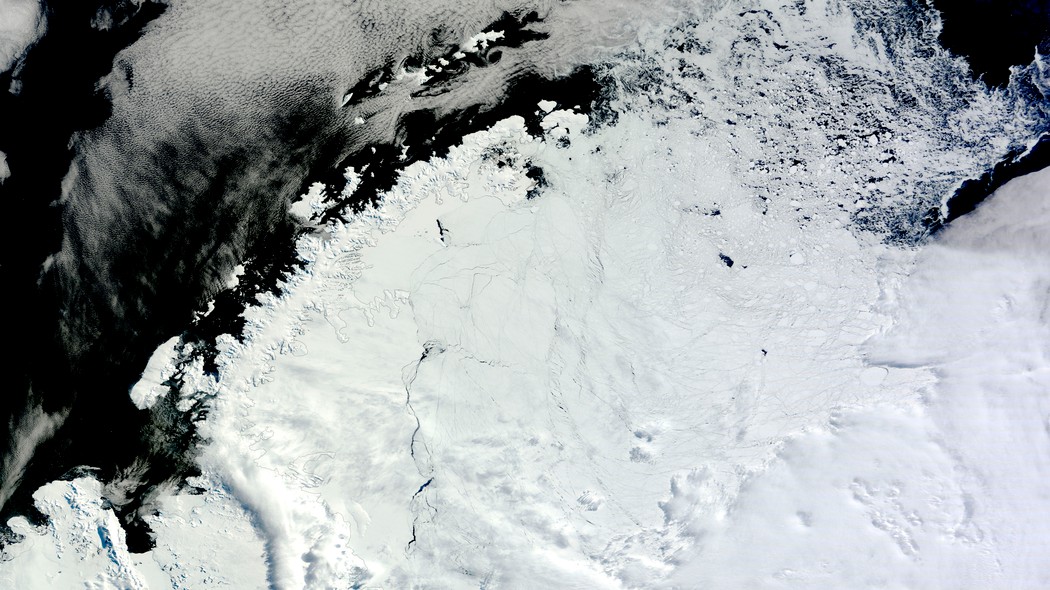A giant hole as large as the state of Maine has opened up in Antarctica’s Weddell Sea for the second year in a row, confusing scientists due to its unusual characteristics. Known by the Russian word polynya, the area surrounded by solid sea ice is hundreds of kilometers from the ice edge and researchers based at Princeton University were able to identify it thanks to satellite images.
Polynyas usually form in Antarctica’s coastal and scientists are trying to figure out why this one is so “deep in the ice pack,” as atmospheric physicist Kent Moore told Motherboard. A professor at the University of Toronto’s Mississauga campus, he warned it was too soon to attribute the mysterious hole to global warming.
The strange hole measured 80,000 km at its peak, and it will have a significant impact on the oceans by driving convection. When the sea ice melts back, it leads to a sharp contrast between the atmosphere and the sea, Moore explained. He added that the polynya could stay open as the colder water reaches the bottom of the ocean and pushes warmer water to the surface.

Professor Mojib Latif explained to Phys.org that this process leads to extra heat being released to the atmosphere for several winters in a row until the heat reservoir reaches the highest levels. He used the analogy of a pressure relief valve.
Working with the Princeton-based Southern Ocean Carbon and Climate Observations and Modelling (SOCCOM) group, Moore and his colleagues are using observations from deep-sea robots and satellites to study the phenomenon, which in the 1970s was first detected on the same site.
The polynya went away for forty years and reopened in September 2016 for a few weeks. Now that it is back, scientists have more sophisticated resources that enable them to improve their observations. The polynya’s occurrence confirms what scientists had previously calculated, and they want to know what made the hole reopen for two years in a row after four decades of not being there.
“At that time, the scientific community had just launched the first satellites that provided images of the sea-ice cover from space,” said Torge Martin, a meteorologist and climate modeler, as quoted by Phys.org.
The latest technology allows them to study the polynya even if their access to the site itself in the Southern Ocean is insufficient.
The study will help improve knowledge about climate systems
As massive changes are taking place in the Antarctica, finding the causes of the polynya’s behavior will provide valuable information to understand better what’s going on in the icy continent. The study of the giant hole will allow researchers to validate their climate models, Moore said.
While Moore warns that it’s too soon to blame global warming, other scientists note the differences between climate change caused by human activities and natural changes to the climate system.
What is clear is that climate change does have an impact on the structure of the Antarctic Ocean.
Source: Motherboard
